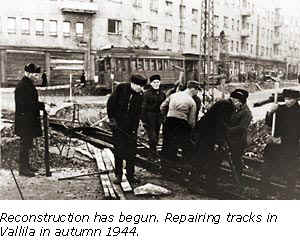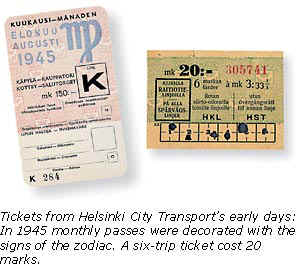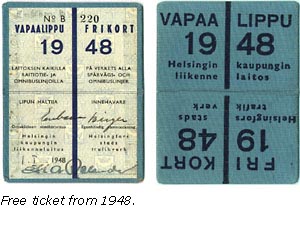|
HKL
Tram Transport main page
 Suomeksi Suomeksi
 På Svenska På Svenska
|
 It took several
years for tram services to recover after the war. Crowding and power outages remained a
problem. The tram fleet was gradually modernized beginning in the late 1940s. A new threat
arose with the rapid spread of cars in the 1950s. With cars, buses and trams all squeezing
into the narrow down-town area, traffic became congested. Trams were criticized as clumsy
vehicles which had outlived their usefulness. It took several
years for tram services to recover after the war. Crowding and power outages remained a
problem. The tram fleet was gradually modernized beginning in the late 1940s. A new threat
arose with the rapid spread of cars in the 1950s. With cars, buses and trams all squeezing
into the narrow down-town area, traffic became congested. Trams were criticized as clumsy
vehicles which had outlived their usefulness.
"In difficult weather and especially snowstorms, there is always a risk of overloaded
electric motors and resulting traffic disturbances...
 All
conductors are therefore urged to prevent overloading during difficult snowstorms by
reducing the maximum number of passengers by as much as 10 persons per tram. It is better
for the public to walk for a day than to have to crowd into a few undamaged trams for a
month." All
conductors are therefore urged to prevent overloading during difficult snowstorms by
reducing the maximum number of passengers by as much as 10 persons per tram. It is better
for the public to walk for a day than to have to crowd into a few undamaged trams for a
month."
| Helsinki City Transport was established on 1 January 1945
to continue the work of the Tram Company. It has taken care of tram services in Helsinki
since then. |

|



